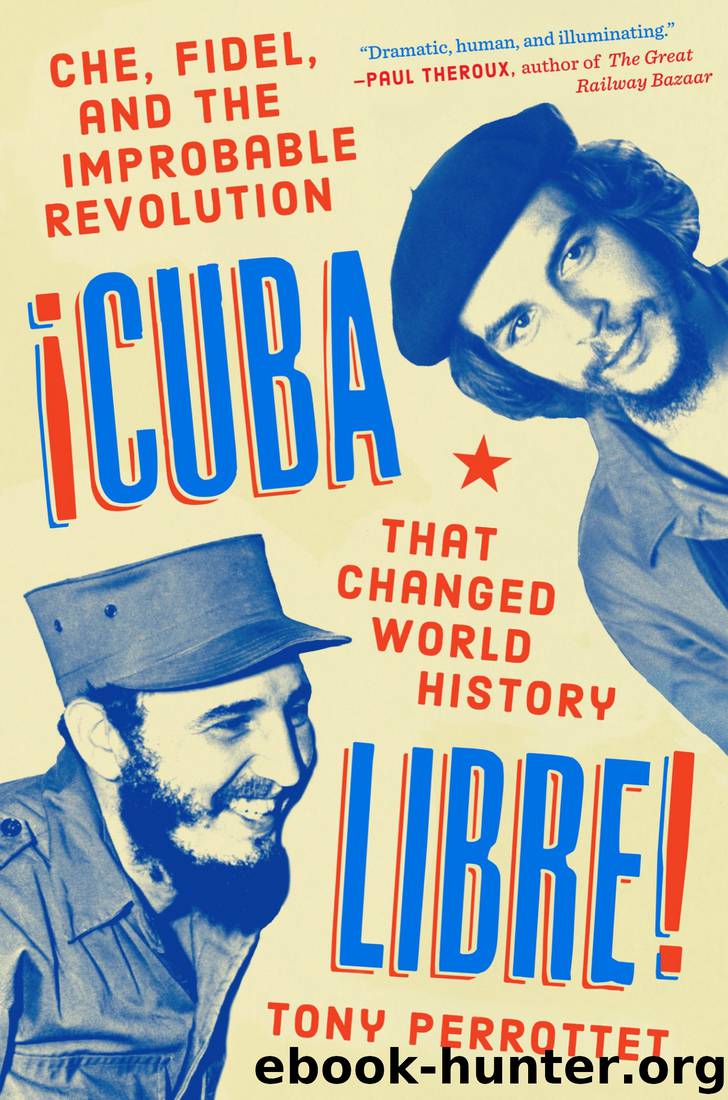Cuba Libre!: Che, Fidel, and the Improbable Revolution That Changed World History by Tony Perrottet

Author:Tony Perrottet
Language: eng
Format: epub
Publisher: Penguin
Published: 2019-01-15T00:00:00+00:00
* * *
• • •
WHETHER INSPIRED BY Papa or not, as 1957 wore on, the guerrillas’ strategies continued to be refined. In November, Almeida was put in charge of expanding the war by descending from the Sierra Maestra for the first time to burn the sugarcane fields. Fidel had long espoused the idea, but it was controversial: the first random attempts the year before had nearly caused a rift with his most powerful ally in the mountains, the grizzled Crescencio Pérez, who objected that it would destroy the livelihoods of the itinerant workers who depended on the zafra for their survival. Sugar was not just integral to the economy of the Oriente, Pérez protested; it was a part of its cultural identity. But Fidel was insistent. Taxes from the sugar crop were propping up Batista, he argued, and economic sabotage had always been an accepted “act of war.” (“During your revolution, didn’t the American colonists throw tea into Boston Harbor as a legitimate defense measure?” he asked Andrew St. George.) To prove his moral commitment, Fidel ordered his own family’s fields to be torched first.
Leaflets were also distributed around Cuba asking for help from budding pyromaniacs. The first new harvest after the revolution’s triumph “will be a zafra of freedom, a zafra of love. It will be YOUR ZAFRA, not Batista’s.” On the other side of the leaflet was a handy guide to incendiary devices—Arson 101—with cartoons in the style of Ripley’s Believe It Or Not! Option A resembled a high school chemistry experiment: a rubber tube filled with the volatile liquid bisulfide of carbon and shards of phosphorous; when they come into contact with a cellulose sheath a chemical reaction makes them burst into flames. (“The uncontrollable fire begins in 40 minutes.”) Option B was a serious step down in technology: a petrol-doused sponge is tied with a yard-long cord to a ferret or the tail of a cat, which will then run through the fields in panic, causing havoc “for up to a kilometer.” (“The animal generally survives.”) Plan C was even more basic but perhaps more practical: a slingshot could shoot pellets of flaming red phosphorous collected from match heads straight into the fields. The range was often over one hundred yards, the leaflet advised, and the balls will burn for half an hour.
In mid-November, Almeida and fifty men slipped into the sugar plantations. The reporter Andrew St. George traveled with them. “By dusk, the skyline billowed with smoke and flamed with a purple, neon-like glow,” he wrote in Look. They met surprisingly little military resistance. Planes strafed the rural roads but there was no sign of army troops. After setting several devastating fires, the rebels were even able to commandeer a bus to get back to the sierra, singing “their favorite Pancho Villa revolutionary song, Cama de Piedra (‘Of stone will be the pillow of the woman who loves me . . .’).”
Download
This site does not store any files on its server. We only index and link to content provided by other sites. Please contact the content providers to delete copyright contents if any and email us, we'll remove relevant links or contents immediately.
| Africa | Americas |
| Arctic & Antarctica | Asia |
| Australia & Oceania | Europe |
| Middle East | Russia |
| United States | World |
| Ancient Civilizations | Military |
| Historical Study & Educational Resources |
Cecilia; Or, Memoirs of an Heiress — Volume 1 by Fanny Burney(31348)
Cecilia; Or, Memoirs of an Heiress — Volume 3 by Fanny Burney(30947)
Cecilia; Or, Memoirs of an Heiress — Volume 2 by Fanny Burney(30906)
The Secret History by Donna Tartt(16656)
Sapiens: A Brief History of Humankind by Yuval Noah Harari(13071)
Leonardo da Vinci by Walter Isaacson(11914)
The Radium Girls by Kate Moore(10915)
Sapiens by Yuval Noah Harari(4550)
The Wind in My Hair by Masih Alinejad(4427)
How Democracies Die by Steven Levitsky & Daniel Ziblatt(4409)
Homo Deus: A Brief History of Tomorrow by Yuval Noah Harari(4288)
Endurance: Shackleton's Incredible Voyage by Alfred Lansing(3854)
The Silk Roads by Peter Frankopan(3777)
Man's Search for Meaning by Viktor Frankl(3646)
Millionaire: The Philanderer, Gambler, and Duelist Who Invented Modern Finance by Janet Gleeson(3575)
The Rape of Nanking by Iris Chang(3526)
Hitler in Los Angeles by Steven J. Ross(3446)
The Motorcycle Diaries by Ernesto Che Guevara(3343)
Joan of Arc by Mary Gordon(3268)
